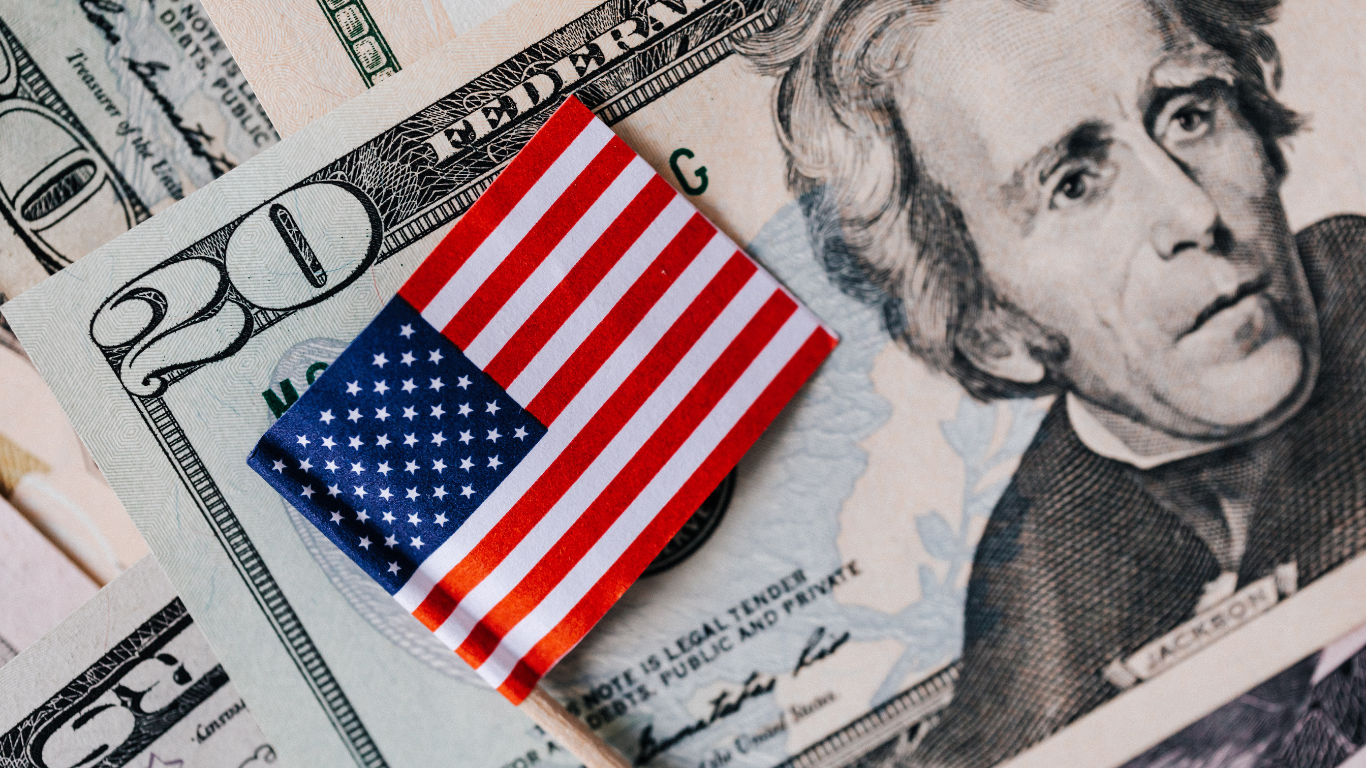You hear it all the time: America’s drowning in debt. Pundits on TV, posts on social media, even chats at the dinner table. The claim is bold-has the U.S. really doubled its national debt in just the last decade? If true, that’s like your household budget exploding overnight, forcing tough choices on everything from groceries to vacations. But numbers like these aren’t just headlines; they’re the story of how we got here and where we might be headed. I’ve pored over the latest reports from the Treasury, CBO, and GAO to sort fact from fear. Spoiler: Yes, the debt has more than doubled from about $17.8 trillion in 2014 to over $35.5 trillion by 2024, and it’s pushing $38 trillion now. But why? And should we panic? Let’s break it down, year by year, without the jargon or spin.
The Straight Facts: Debt in 2014 and Today
Back in 2014, the U.S. national debt stood at $17.8 trillion. That was already a hefty sum, born from the Great Recession’s bailouts and wars in Iraq and Afghanistan. Families were still reeling from job losses, and Washington was patching holes with borrowed cash. Fast forward to 2024, and the total federal debt has ballooned to $35.5 trillion. That’s not a rounding error-it’s exactly double, give or take a few billion. By October 2025, it’s crossed $38 trillion, according to Treasury tallies.
This isn’t pocket change. Per person, it means every American-from newborns to retirees-owes about $111,000. Households? Around $286,000. The debt includes money owed to everyday investors, foreign governments like Japan and China, and even our own Social Security fund. It’s grown at a clip of nearly $6 billion a day over the past year alone. That’s faster than during the pandemic surge. Why the jump? Blame a mix of steady deficits, one-off crises, and policies that kicked the can down the road. But the raw truth is simple: We’ve spent more than we’ve earned, year after year, and the bill’s come due in spades.
A Year-by-Year Climb: Tracking the Surge
Let’s map this out like a road trip gone long. In 2015, debt ticked up to $18.1 trillion, a modest 1.7% bump as the economy steadied post-recession. By 2016, $19.6 trillion was still under control, with deficits around $585 billion. Then 2017: $20.2 trillion, nudged by tax cuts that juiced growth but trimmed revenues.
The real acceleration hit in 2018 at $21.5 trillion, thanks to those same cuts and rising spending. 2019? $22.7 trillion, pre-pandemic calm. But 2020 flipped the script: COVID slammed the brakes, and stimulus checks, PPP loans, and unemployment aid shot debt to $27.7 trillion 22% leap in one year. 2021 kept the pedal down at $28.4 trillion, with more relief packages.
2022 eased to $30.9 trillion as vaccines rolled out, but inflation was brewing. By 2023, $33.2 trillion, fueled by higher interest rates. 2024 closed at $35.5 trillion, and now in 2025, it’s $38 trillion. That’s an average annual growth of 7.3%-double the pace of the economy itself. Each year added layers, from emergency spending to everyday shortfalls. It’s like watching a snowball roll downhill, picking up speed.
What Sparked the Fire? Key Drivers Behind the Doubling
No single villain here-it’s a cast of culprits. First, the pandemic: $5 trillion in relief from 2020-2021 kept businesses afloat and families fed, but it was pure borrowing. Without it, millions more would’ve suffered, yet it supercharged the debt.
Tax cuts play a big role, too. The 2017 reforms slashed corporate rates from 35% to 21%, boosting short-term growth but carving $1.9 trillion from revenues over a decade. Add in bipartisan spending hikes-defence budgets swelled under Trump and Biden-and you’ve got deficits averaging $1.5 trillion yearly.
Ageing boomers are the quiet killer. Social Security and Medicare, mandatory programs, eat 40% of the budget now, up from 30% a decade ago. Healthcare costs per person rose 50%, driven by pricey drugs and longer lives. Then interest: What was $231 billion in 2014 is $909 billion in 2024, as rates climbed from near-zero to over 3%. Inflation adjusted for higher costs, but revenues lagged-tax breaks for the wealthy and corporations widened the gap. It’s not malice; it’s math. Spending outpaced income, and Congress kept approving more.
The Debt-to-GDP Lens: Is It as Bad as It Sounds?
Raw dollars scare folks, but economists prefer debt-to-GDP-the debt pile versus the economy’s output. In 2014, it was 74%. Today? Around 124% in 2024, projected to hit 122% by 2034. That’s the high-post-WWII peak was 106%-but not Greece-level (180%). The U.S. economy grew from $17.5 trillion to $28 trillion in GDP, softening the blow.
Still, it’s climbing fast. CBO warns it’ll surpass 144% by 2049 if unchecked. Why care? A bigger ratio means less wiggle room for crises. Japan sits at 250%, but its debt is mostly domestic yen, easy to manage. Ours? 23% foreign-held, vulnerable to global jitters. It’s a sustainable short-term dollar king—but long-term, it’s like driving with fading brakes.
Everyday Impacts: How This Hits Your Wallet
You feel it without knowing the acronym. Higher debt means pricier loans. Mortgage rates? Up from 3.5% in 2014 to 6.5% now, thanks to Treasury yields rising with debt sales. Car loans, student debt-same story. A family buying a $300,000 home pays $1,000 more monthly than a decade ago.
Taxes creep up, too. To service $1 trillion in yearly interest, lawmakers eye hikes or cuts elsewhere-think delayed infrastructure or trimmed education. Inflation? Partly from borrowing-fueled spending. Groceries cost 25% more since 2020; wages haven’t kept pace for many.
Jobs suffer subtly. High debt crowds out private investment firms borrow less for factories when competing with Uncle Sam. CBO estimates 0.1% slower growth per percentage point rise in the debt ratio. That’s thousands of lost jobs, stagnant wages. Retirees watch Social Security wobble as funds dip into the trust. It’s not tomorrow’s crisis; it’s today’s squeeze on dreams deferred.
The Bill Comes Due: Interest Costs Explode
Interest was a footnote in 2014-$231 billion, 1.3% of GDP. Now? $909 billion in 2024, 3% of GDP, topping defence spending. That’s the debt’s hidden tax money recycled to bondholders instead of roads or schools.
Why the spike? Rates doubled from 1.7% to 3.4% average. Fed hikes to fight inflation rolled over old low-rate debt with pricier bonds. CBO projects $1.8 trillion annually by 2035-14% of the budget. Over 10 years, that’s $14 trillion, per the Peterson Foundation. It crowds everything: Less for veterans, kids’ programs. Like a credit card at 20% with a minimum payment balloon, the principal never shrinks. Voters notice when parks close or bridges crumble.
Global Ripples: How the World Feels the Strain
America’s debt isn’t just our problem. Foreigners hold $8.5 trillion $1.1 trillion, and China $800 billion. If confidence wanes, they dump bonds, spiking rates worldwide. Remember 2011’s downgrade? Stocks tanked 17%.
Our borrowing props up global growth-we buy imports, fueling jobs abroad. But endless deficits erode the dollar’s throne. Gold hit $4,000 an ounce in 2025 amid fears. Moody’s cut our rating to Aa1 in 2025, citing fiscal woes. That raises borrowing costs for everyone-from Brazilian farmers to German exporters. Allies worry: Can the U.S. lead if broke? It’s a domino-our debt wobble shakes the board.
Warning Signs: Risks of a Debt Spiral
High debt’s like high cholesterol-silent until the heart attack. CBO flags a fiscal crisis: Investors baulk, rates soar to 7-10%, deficits explode. Greece 2010? 25% GDP contraction, riots. Us? Unlikely soon dollar’s reserve status buys time-but Moody’s downgrade hints at cracks.
Growth stalls too. Studies show each 10% debt-to-GDP rise shaves 0.2% off annual growth. That’s $500 billion lost yearly by 2030. Inflation risks return if we print money. Shutdowns, like 2025’s, add $11 billion hits. Politicians bicker over ceilings, delaying fixes. It’s a slow burn toward tougher choices.
Paths Forward: Can We Turn This Around?
Hope’s not lost. Balance budgets with targeted cuts-trim waste in defence ($800 billion yearly), and reform entitlements without gutting benefits. Raise revenues smartly: Close loopholes for billionaires, not middle-class hikes. Bipartisan commissions, like Simpson-Bowles 2010, mapped $4 trillion in savings.
Growth helps: Invest in infrastructure, education, in roads yields $1.50 back. Carbon taxes or value-added taxes could add trillions without pain. Immigration boosts workers, taxes. But it needs spine-Congress must own the math. Voters push: 81% worry about debt. Short-term? Raise the ceiling, avoid shutdowns. Long-term? A grand bargain before 2030’s reckoning.
Lessons from History: What Other Nations Teach Us
Japan’s at 250% debt-to-GDP, yet stable domestic bonds, low rates. But stagnation’s their curse: Lost decades, deflation. UK cut post-WWII via growth, taxes. Post-2008 Europe? Austerity bit hard, sparking recessions. U.S. edge? Dynamic economy, innovative edge. But ignore warnings, and we join the club-Argentina’s defaults, Italy’s woes. History screams: Act early, or pay later.
Why It Matters for Your Future
This debt’s your inheritance. Grandkids face higher taxes, fewer services. But it’s fixable with choices now. It’s not doom; it’s a wake-up. Demand accountability-call reps, vote fiscal hawks. Understand: Borrowing built highways, won wars, but excess erodes promise. Let’s steer straight before the road ends.
FAQ
Q: Has the US debt really doubled in 10 years?
A: Yes, from $17.8 trillion in 2014 to $35.5 trillion in 2024, now over $38 trillion.
Q: Is the debt-to-GDP ratio worsening?
A: Absolutely, from 74% in 2014 to 124% in 2024, projected higher.
Q: What’s the biggest driver of the increase?
A: COVID relief, tax cuts, entitlements, and rising interest costs.
Q: Could the US default?
A: Unlikely soon, but risks grow with inaction-higher rates, slower growth.
Q: How can we fix it?
A: Cut waste, raise smart revenues, boost growth through investment.




